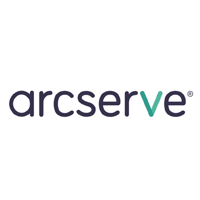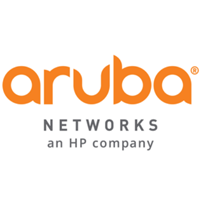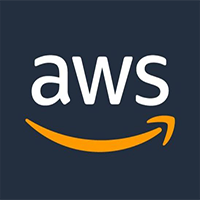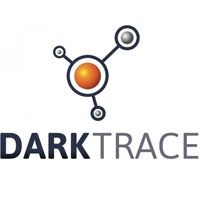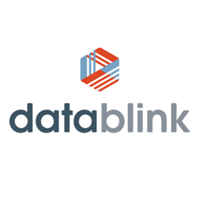Plan Carefully When Migrating To A Cloud Data Warehouse Leave a comment
Содержание
You can reach him at , @prussom on Twitter, and on LinkedIn at linkedin.com/in/philiprussom. Sometimes you can “lift and shift” data from one system to another with minimal work — but usually you cannot. Even when lift and shift works, developers need to tweak data models and interfaces for maximum performance on the new platform. A replatforming project can easily turn into a development project when data being migrated or consolidated requires considerable work. In a related direction, some data warehouse modernization strategies simplify bloated and redundant portfolios of databases by consolidating them onto fewer platforms, with cloud-based databases increasingly serving as a consolidation platform. Even when using an augmentation strategy for data warehouse modernization, “data balancing” is an inevitable migration task as you redistribute data across the new combination of old and new platforms.
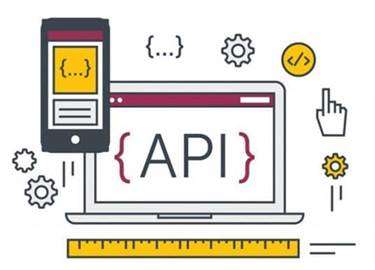
This brings us to the importance of infrastructure consistency, and how cloud migration affects the networking, security, and storage of the workloads you’re migrating. One of the benefits of the cloud that has been touted since the very beginning is lower costs. And yet, organizations are constantly being hit with higher-than-expected cloud bills. There are numerous reasons this happens, but solving it can prove to be a challenge.
Related Articles
Develop a controls framework that allows you to lever up with a more integrated cloud and cyber approach. The process of migration provides an opportunity and necessity to rethink security models, tools, and capabilities. The cloud controls framework should start with an understanding of the data requirements and encompass user/identity level, network/infrastructure/application, and core application controls. Organizations can conduct a risk assessment across their technology, regulatory, and cyber environment; implement the appropriate controls to fill gaps and remediate those risks; and migrate workloads to secure cloud landing zones. Identifying who may likely do the work with a shared services model and cloud cyber team structure.
Contact us for more information on how our team of expert engineers can help you with cloud data migrations. The large size and complexity of deliverables raises the probability of failure. By comparison, a project plan with multiple phases will be a less risky way to achieve your goals for modernization and cloud migration. A multiphase project plan segments work into multiple manageable pieces, each with a realistic technical goal that adds discernable business value. Once you have decided to migrate your data warehouse to a cloud-based database, the hard and risky work of data migration begins.
Affected parties (i.e., managers and sometimes end users, too) should be involved in planning a data warehouse modernization and migration to cloud. First, their input should affect the whole project from the beginning so they get what they need to be successful with the new cloud data warehouse. Second, the new platform roll-out should take into consideration the productivity and process needs of all affected parties.
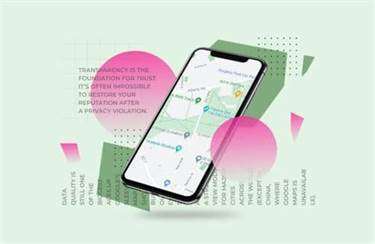
Experience also includes work in, e-commerce, systems management software, and various aspects of the supply chain market space, with strong background in Middleware. Industry background includes Consumer, Energy and Resources and Telecommunications. When you keep your infrastructure layer consistent between the data center and public cloud, you can avoid these complications altogether. You’re able to maximize the investment that you’ve already made in your applications and ensure a cost-effective, fast, and low-risk migration to the cloud.
Why It Matters: An Integrated Cloud Cyber Approach Can Help Build Business And Technology Resilience
With NSX, you can seamlessly extend your network from on-premises to the cloud with full visibility, enterprise-grade L2 and L3 networking functionality, and microsegmentation. Your applications keep their networking policies, so you don’t have to rewrite them for the public cloud or purchase new components. With Virtana Optimize, take control with a comprehensive spending overview and bill analysis. Gain insights into cloud cost, performance, and capacity optimization through real-time data collection and analytics to ensure you stay on budget, even as conditions and options change, and avoid an end-of-month billing surprises. Based on our own experience, we gathered top 7 essential threats and risks in cloud migration.

Reduce unauthorized access and accountability by limiting user access personally. Change your Analytics and performance cookie settings to access this feature. TDWI Members have access to exclusive research reports, publications, communities and training. It enables data analysts, architects, and engineers to access all of the data they need at once. China could add approximately $2.2 billion in projects over the next couple of years. As a secondary option, you can alsoinvite your users from within your Cloud site.
It’s also best to establish a communications cadence for when, and how often, you’ll be communicating updates so teams are informed and prepared for the change. Your user migration strategy depends on which migration tools you use, and whether you have an external identity provider. Before deciding to migrate your users, be sure you’ve reviewedhow users, groups and permissions are migratedfor each product. Keeping your infrastructure layer consistent lets you maintain the security you’ve already established in your applications, and the compliance VMware maintains for its software, removing a massive hurdle for running your apps in the cloud. As an additional benefit of microsegmentation in NSX, you can also monitor and protect east-west traffic in the public cloud.
Part of the test migration is conducting User Acceptance Testing so your end users can replicate common day-to-day tasks, and make sure they work as expected. Through this process you can uncover any issues that will impact your end users and help your teams prepare to work in Cloud. If you’re using a self-managed LDAP or Active Directory as your user authentication method, you must use Atlassian Access, which acts as the bridge between your identity provider and Atlassian Cloud products. If you don’t have a supported cloud identity provider, Atlassian offers a partnership with Okta for a free account.
Deloitte Us Cyber & Strategic Risk Leader
Instead of the onus being on admins, it’s our responsibility to stay on top of the changing regulatory and compliance needs across the globe, so no matter where you’re located, your data is safe. To dive deeper into our certifications and how we’re keeping your data secure, visit theAtlassian Trust Center. This is where you’ll take stock of your current landscape, and understand the differences between Cloud and self-managed deployments such as features, maintenance, and costs. Ourtechnical documentation is available and linked throughout the guide to provide you with step-by-step details on preparing and executing your migration, as well as supplemental information on setting up and getting the most out of your Cloud products. In addition to this guide, our free migration demooffers advice, tips, and best practices for each phase, along with live chat Q&A with our migration support team throughout the demo.
- At the end of your runbook, include a mitigation plan with owners just in case you need to roll anything back.
- As a consequence, vital info can leak due to the most trivial reasons on the client’s side .
- It’s time to bring out the runbook you created and follow the steps and timing you put together to move your data over to Cloud.
- For some companies, this step may happen sooner depending on the criticality of the products being migrated.
- First, their input should affect the whole project from the beginning so they get what they need to be successful with the new cloud data warehouse.
- Diana is a senior manager in the Deloitte Center for Integrated Research where she analyzes market shifts and emerging trends across industries.
Indeed, many organizations are moving fast to migrate to the cloud without paying enough attention upfront to security. Finally, a cloud is an easily centralized and globally available platform, which makes it an ideal target for data consolidation, as well as popular use cases such as analytics, self-service data practices, and data sharing across organizational boundaries. The rest of Europe is expected to contribute $613.8 worth of data migration projects. With careful planning, preparation, and an all-star team, you’ve successfully migrated to Cloud.
Security
The public cloud is fundamentally different than the on-premises environment. While a slight increase in latency is to be expected and may be acceptable depending on the application, you want to avoid problems that prevent you from meeting your SLAs. Of the organizations who had to bring migrated workloads back on premises, 29% said it was because of application performance degradation.
Whenmanaging users in Cloud, creating an organization and verifying your domains give you a centralized view of all users at your company across multiple Cloud sites and Atlassian Cloud products. This will also give admins more control with the ability to implement security policies across claimed user accounts. In this section we’ll highlight the key things to consider when comparing deployments to ensure you’re making the right decisions.
As part of testing, you may want to install and test the full functionality and migration of any apps that you plan on using in Cloud. Make sure both you and your stakeholders have tested the Cloud functionality and https://globalcloudteam.com/ that it suits your teams’ needs. If you need centralized, enterprise-grade security and administration across your Atlassian Cloud products, then this is a good time to consider whether you needAtlassian Access.
Pump Your Own Data
Public cloud computing concerns many businesses when it comes to transferring their data and applications. With public cloud solutions such as AWS, Google Cloud, and Azure, you lose full control. Even managing your security processes is impossible without an on-premise infrastructure. Secure landing zone–establish a secure environment covering account structures, security rules, and other foundational services, based on the operating model. For example, many organizations establish a public subnet and a private subnet as a public-facing landing zone versus a private virtual network for corporate users.
The Need for Data Center Resilience and Readiness – Connect CRE
The Need for Data Center Resilience and Readiness.
Posted: Thu, 22 Sep 2022 17:17:45 GMT [source]
Data migration strategies allow companies to get all of their data and digital assets into a single, unified storage system, like a data lake or a cloud data warehouse. We recommend choosing stages based on value-specific cohorts (for example, separate servers, products, active vs. archived/inactive). As you complete each migration, issues can be worked out and users onboarded and trained in small chunks. To access your organization, go toadmin.atlassian.comand follow these steps onhow to set up, rename, and add products and sites to your organization. Unlike our self-managed products that require your time and attention for maintenance, upgrades, hosting, and more, our Cloud products are hosted, setup, secured, maintained, and updated by Atlassian — taking the administrative burden off your team.
Risk Management Considerations For The Cloud Cyber Program
With vSAN, you maintain your policy-driven storage by using existing tools for predictable performance, efficiency, and scalability. You also have immediate access to cloud-based disaster recovery, pre-integrated with VMware Cloud. Professional ServicesProfessional ServicesVirtana is dedicated to providing our customers with enterprise-class support, with easy and reliable 24/7 access to our support center, online resources, and corrective maintenance services. Security and protection against cyber threats are also their responsibilities.
We offer a few different support channels to help you throughout your migration. The level of support you need will depend on your stage in the migration journey and your migration complexity, which can be impacted by factors like user count, apps and products you’re looking to migrate . Last, as you refactor your applications, you may lose existing storage policies for availability, performance, and access, requiring you to rebuild them in the public cloud. When refactoring for the public cloud, elements of networking are purchased and maintained separately, with changes required to your routing, DNS, and IP addresses. Using multiple public cloud providers increases this complexity, involving different tooling per cloud. Much of the time and investment you’ve put into your existing network isn’t carried forward during and after your migration.
Next Generation Of Vmware Cloud Launchpad
In this case, you will want to consider how you will monitor and manage your workloads across multiple public clouds. In addition to understanding the relative strengths and weaknesses of your CSP options, you also want to be able to see how your specific workloads will operate within that particular cloud environment. Understanding technology risks can be critical—and Cloud data migration potentially surprising for organizations that believe their systems to be well protected. Vikram is a principal in Deloitte & Touche LLP’s Cyber Risk Services practice and is the US Application Security solution leader. Vikram has over 21 years of experience in design and implementation of cyber security solutions and cyber risk management programs.
Like we’ve said before, migration is a team sport — so it’s time to build your dream team to help your organization make the move. In most migrations, the roles outlined below are involved for end-to-end success, however, for smaller teams the same person may wear multiple hats. Once you have your list of current apps and their usage, take this opportunity to do some spring cleaning. Talk to your internal teams to understand which apps are essential to day-to-day work, and are must-haves in Cloud, and which apps are no longer mission-critical or even being used. Understanding your current environment and what your teams actually need will help you better define your path forward. Cleaning up and standardizing your workflows, tools, and teams prior to migrating will both make the process smoother, and benefit your teams once you transition to Cloud.

